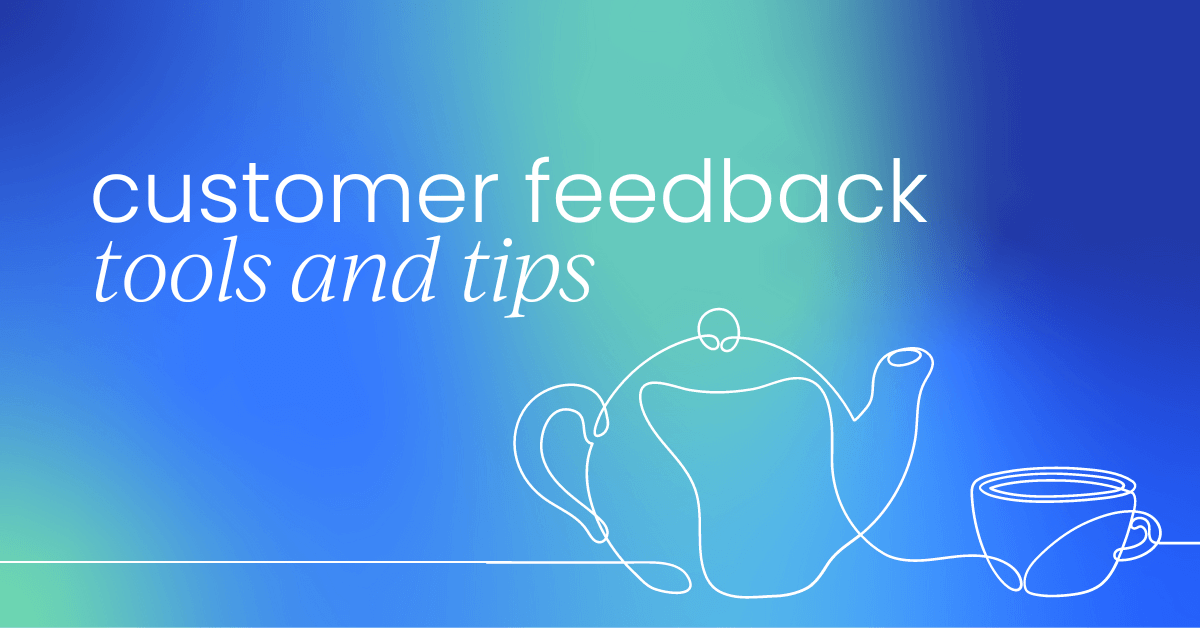Let's jump into a crucial aspect of product management that often gets overlooked: customer feedback. You know, that goldmine of information your users provide that can significantly enhance your product offerings.
We want to explore effective strategies for gathering, analyzing, and implementing customer feedback with the best tools and methods available, all so you can streamline this process for product teams. So, grab a cup of coffee, and let's get go!
Why customer feedback matters
First things first, why should you care about it? Well, customer feedback is essentially the voice of your users. It tells you what's working, what's not, and what they wish your product could do. Ignoring this valuable input is like trying to navigate a ship without a compass. Here are a few reasons why customer feedback is crucial:
1. Improvement opportunities: Direct insights into areas where your product can be improved.
2. Customer satisfaction: Understanding what makes your customers happy or unhappy helps in tailoring your offerings to better meet their needs.
3. Innovation: Fresh ideas and suggestions can lead to innovative features or entirely new products.
4. Customer loyalty: When customers see their feedback being implemented, they feel valued and are more likely to stick around.
Now that we know why customer feedback is essential, let's delve into how to gather it effectively.
Gathering customer feedback
Gathering customer feedback is the first step towards improvement. There are numerous ways to collect this information, each with its own set of benefits. Here are some tried-and-true methods:
1. Customer feedback questionnaire
A well-designed customer feedback questionnaire can provide deep insights into user satisfaction and areas needing improvement. Here's how to create an effective one:
- Keep it short and simple: Lengthy questionnaires can deter users. Aim for brevity while covering all critical aspects.
- Ask open-ended questions: Allow customers to express their thoughts freely. For instance, "What feature do you think is missing from our product?"
- Use rating scales: Quantitative data is easier to analyze. Use scales (e.g., 1 to 5) to gauge satisfaction levels.
- Be specific: Ask questions about specific features or experiences to get detailed feedback.
2. Customer feedback software
In today's digital age, leveraging customer feedback software can streamline the feedback collection process. These tools offer various features like surveys, real-time feedback, and analytics. Some popular customer feedback software includes:
- SurveyMonkey: An easy-to-use tool for creating detailed surveys.
- Qualtrics: Offers sophisticated survey tools and data analytics.
- Typeform: Known for its user-friendly interface and engaging survey designs.
3. Social media listening
Social media platforms are buzzing with customer opinions. By monitoring these channels, you can gather unfiltered feedback. Tools like Hootsuite and Brandwatch can help in tracking mentions and sentiment analysis.
4. Direct customer interactions
Sometimes, the best way to get feedback is through direct interactions. This can be done via:
- Customer support: Train your support team to ask for feedback after resolving issues.
- Live chat: Real-time feedback can be collected through live chat tools on your website.
- Focus groups: Gather a group of users to discuss their experiences and suggestions.
5. User insights from analytics
Your product's usage data can offer valuable insights. Tools like Google Analytics and Mixpanel can help you understand user behavior, highlighting areas where users might be struggling or dropping off.

Analyzing customer feedback
Collecting feedback is just the beginning; the real magic happens when you analyze this data to extract actionable insights. To do this effectively, start by categorizing feedback into areas such as usability, features, performance, and customer service to identify common themes and prioritize improvements. Look for recurring issues or suggestions to pinpoint areas needing immediate attention.
Understand the emotions behind the feedback through sentiment analysis tools like Lexalytics and MonkeyLearn to gauge customer sentiment. Use quantitative methods to measure the impact of feedback, such as noting if 70% of users report difficulty with a specific feature.
Finally, group feedback based on different customer personas to understand how various segments of your user base perceive your product.
Implementing customer feedback
Once you've gathered and analyzed the feedback, it's time to take action. Implementing customer feedback effectively can lead to significant product improvements by prioritizing issues based on their impact on user experience and business goals, creating a roadmap for critical improvements. Involve the entire team, including developers, designers, marketers, and customer support, to ensure a holistic approach.
Communicate the changes to your customers through newsletters, blog posts, or in-app notifications to build trust and encourage more feedback. Embrace an iterative process of implementing changes, testing them, and gathering additional feedback to ensure solutions meet customer expectations. Celebrate successes by sharing positive results with your team and customers to boost morale and reinforce the importance of customer feedback.
Tools and methods for streamlining feedback management
Managing customer feedback can be overwhelming, especially as your user base grows. Thankfully, there are numerous tools and methods available to streamline this process. Here are some that can make your life easier:
1. Customer feedback tools
Investing in customer feedback tools can automate and simplify feedback collection and analysis. Here are a few worth considering:
- Zendesk: A comprehensive customer service platform that includes feedback management.
- HubSpot: Offers feedback surveys as part of its customer service software.
- UserVoice: Allows users to submit and vote on feedback, helping you prioritize the most requested features.
2. Project Management Software
Using project management software can help in organizing and tracking feedback implementation. Tools like Trello, Asana, and Jira are great for creating feedback roadmaps, assigning tasks, and monitoring progress.
3. CRM Systems
Customer Relationship Management (CRM) systems like Salesforce and Zoho CRM can centralize customer feedback, making it easier to track interactions and follow up on issues.
4. Collaboration tools
Collaboration tools like Slack, Microsoft Teams, and Confluence can facilitate communication among team members, ensuring everyone is on the same page regarding feedback and improvements.
5. Data visualization tools
Visualizing feedback data can make it easier to understand and act upon. Tools like Tableau and Power BI can help in creating insightful dashboards that highlight key feedback metrics.
Conclusion
Maximizing customer feedback for product improvement is a journey, not a destination. It requires a proactive approach to gathering, analyzing, and implementing feedback. By leveraging the right tools and methods, you can streamline this process and ensure that your product evolves in line with customer needs and expectations.
Remember, customer feedback is not just about addressing complaints; it’s about understanding your users and creating a product they love. So, start listening to your customers today, and watch your product soar to new heights!
Download the State of AI Product Management Report 2023. In the latest report, we give a full lay of the land of AI product management. Check out the report now.👇




 Follow us on LinkedIn
Follow us on LinkedIn




